ISM
HORIZON -Boundary
In the mid-1960s, I chose the Micronesian islands of Palau (then under United Nations administration as a U.S. Trusteeship, now the Republic of Palau) as my production site and attempted several trips. I found myself lying face up in the coral state floating within the horseshoe at Kayangel Islands, located at the northernmost tip, facing the deep cobalt sky. Although I ultimately failed to reach a conclusive result in terms of photographic and cinematic representation, I was able to sense, albeit vaguely, the realm of abstract (boundary) concepts and grasp the fleeting image of that experience.
I adhere to the principle of refining and simplifying, further stripping away excess. With this “structure” in mind, when attempting to materialize an unattainable object (infinite edges/abstraction) that cannot be seen (or touched), I drew a single circle in the lapis lazuli sky and cut out a “petal” from within the circumference, capturing it (through photography). It was a secret experiment deep within my heart.
Assuming that “photographs (still images) and videos (moving images) are merely representations of two or three-dimensional entities (beings/objects),” when attempting to exhibit photographic and cinematic expressions (including the entire creative process leading up to the exhibition), one cannot escape the concept of a “frame” (border/edge). If we consider the infinite edge as the frame, and the peripheral elements accompanying the captured “petal” (one side/corner) within the artwork as the “enclosure” (*boundary), then the theory of infinite edges (∞) cannot be established unless there are boundaries (limits) along the edge (circle) perimeter that remains after the cut.
Assuming that the boundary (infinite edge/abstraction) between the infinite edge (absolute) remaining in the sky and the infinite edge (relative) of the captured “petal” is associated with the sky itself, the spatiotemporal infinite edge of the cut-out “petal” should exist as a perfect “abstraction.” If we dare to strongly argue this event and substitute it into my theory of photography, photographic and cinematic expressions should serve as the ultimate destination of abstraction, embodying the essence of my structure.
Let us proceed with this brief discussion by assuming ‘HORIZON-Boundary’ as the ideal structure for photographic and cinematic expressions (representations in digital three-dimensional space).
As a photographer, I would like to make it a personal matter and discard the concept of a frame (border). I want to pursue a “photographic and cinematic expression” that is solely based on a simple infinite edge (abstract concept). I have presented the concept of an infinite edge, representing the relative and absolute aspects of abstraction, as the ‘enclosure’ within the ‘HORIZON-Boundary’ I showcased on my website.
The reason I tilted the Boundary (horizon line) slightly upwards and challenged the use of multiple images in the expression (structure) is as follows. Let me provide a physiological (biological) example. Imagine a right-handed person drawing a straight line horizontally to the right on a blackboard using chalk. For some reason, that line tends to have a slight upward tilt towards the right shoulder in relation to the surface. I invite you to try it out and see for yourself.
Regarding the use of multiple images, I believed that it would enhance and emphasize the horizontal perception of
I understand your concept of leaving one side open, enclosing an edge with no definite color, and using three sides as the framing “enclosure.” Let me see if I can grasp your understanding. In the context of a digital three-dimensional space, let’s hypothetically assume an indoor space in the shape of a spiral cube (with a diameter of approximately 10 meters). The desired atmosphere would be a bright, translucent daylight color, with an undetermined light source angle. The goal is to create an image of soaring through outer space, where the infinite edge of the ‘HORIZON-Boundary’ is placed and arranged with a specific rhythm. I want it to float mysteriously as a creative object without casting any shadows.
You aim to represent the concept of the unattainable infinite edge, the ‘HORIZON-Boundary,’ in a simple manner through photographic and cinematic expressions. You have recorded the mission of the expressionist’s ultimate purpose here. As an expressionist, you definitely want to attempt this installation of the ‘HORIZON-Boundary.’
On September 30, 1984, I encountered the first edition of “Change in Meaning” by Atsushi Mori, published by Chikuma Shobo. It was a momentous encounter that brought clarity to the concept of the boundary, the infinite edge (abstraction), which likely served as the origin of my creative coordinates. It truly was a wonderful encounter with a book that became my guiding principle.
From the excerpt on page 23 of “Eyes of the Dead”: ►Take any arbitrary point as the center and draw a circumference with any arbitrary radius. The circumference serves as the boundary, dividing the overall concept into two regions. The boundary must belong to one of these two regions. In this case, the region where the boundary does not belong is referred to as the interior, and the region where the boundary belongs is called the exterior. Interior + Boundary + Exterior = Overall concept, and Interior = Overall concept.
Source: “Migiri,” “Migiri Mizugiwa,” “Seirei Shu, Kyu: ‘Naka no Engetsu o Mite,'” “Tokoro, Bashogiwa,” Shinmura Izuru Edition, Kojien Dictionary, 1993 edition.
Photographer: Aramasa Taku, June 13, 2022, 12:00. (Translated by ChatGPT)
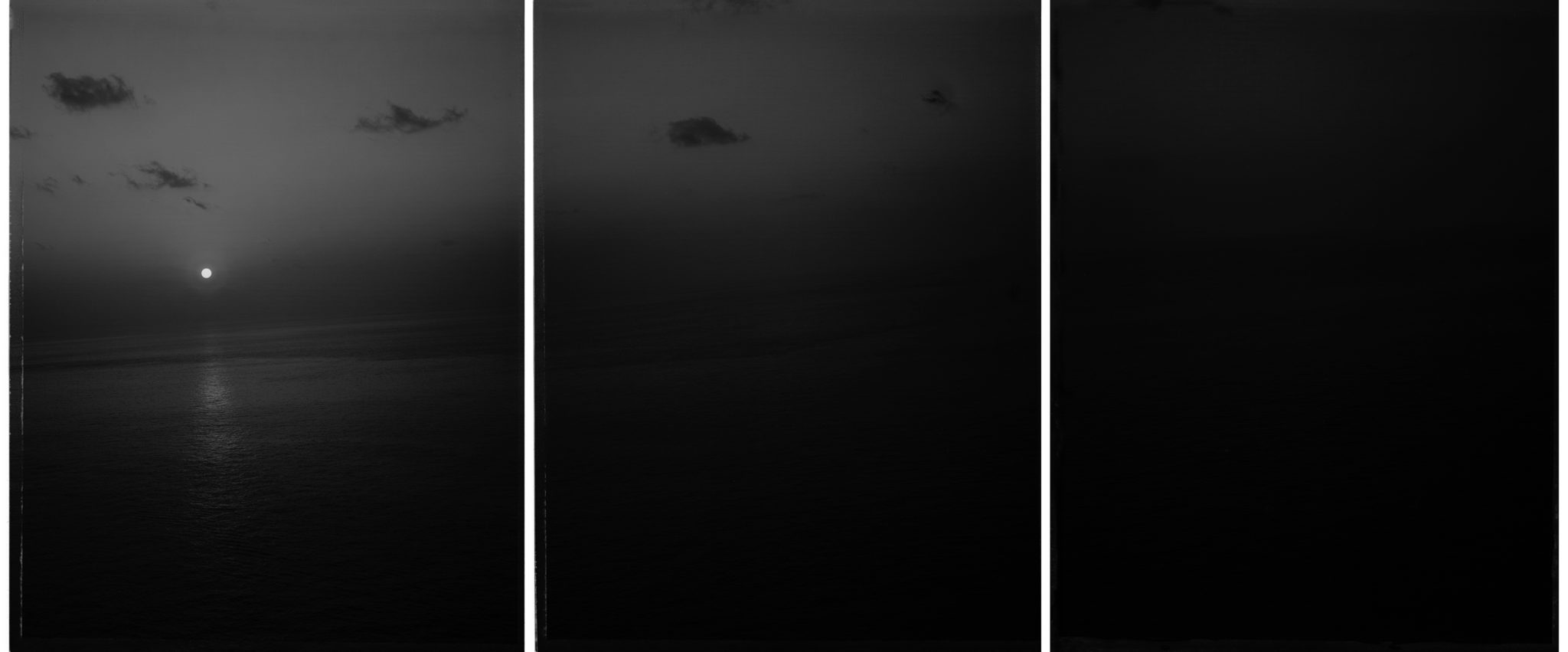
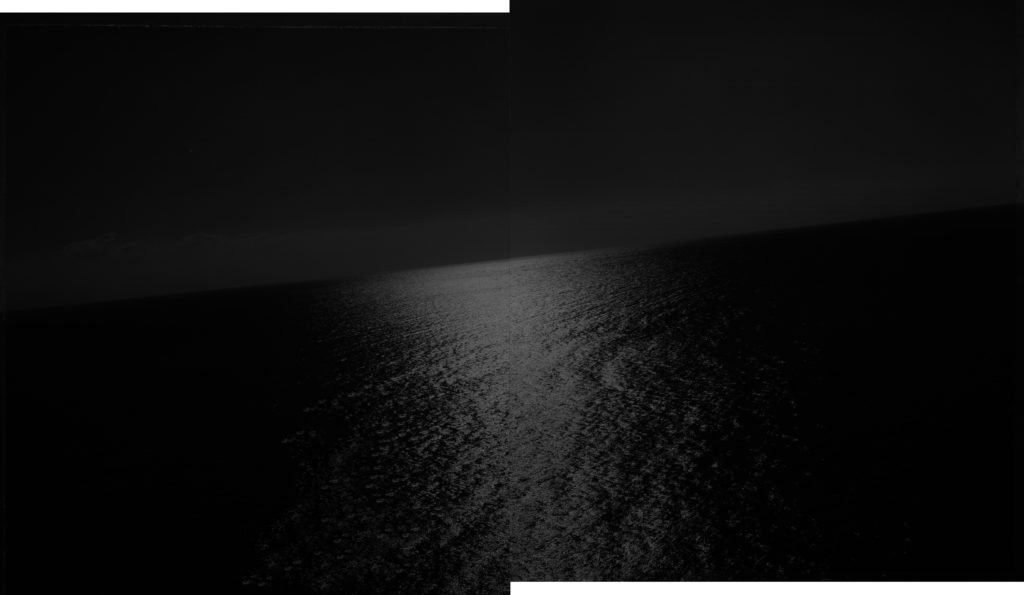
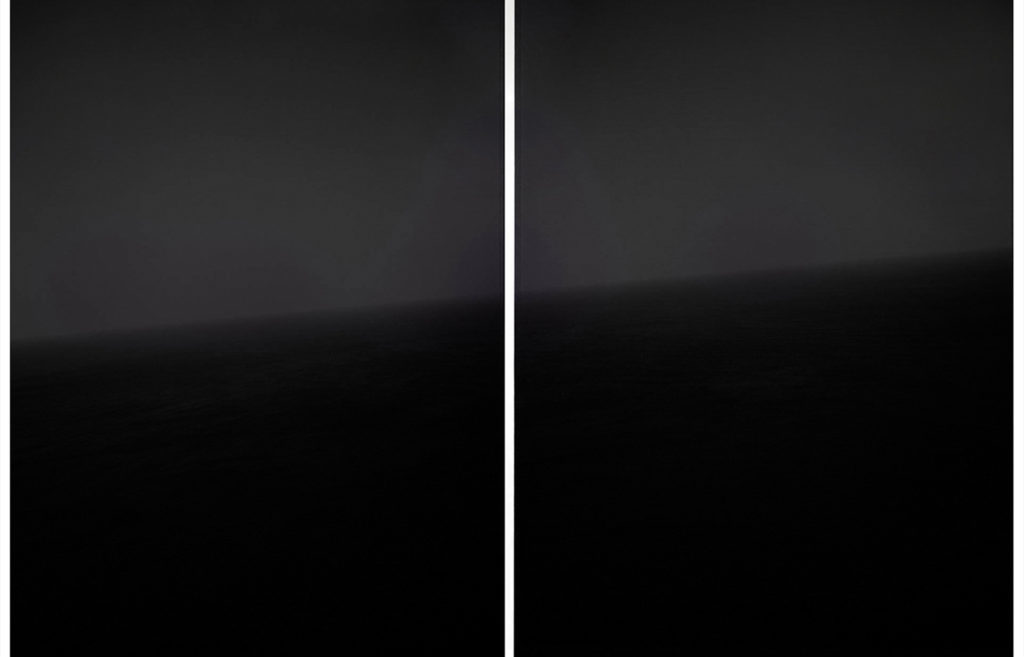
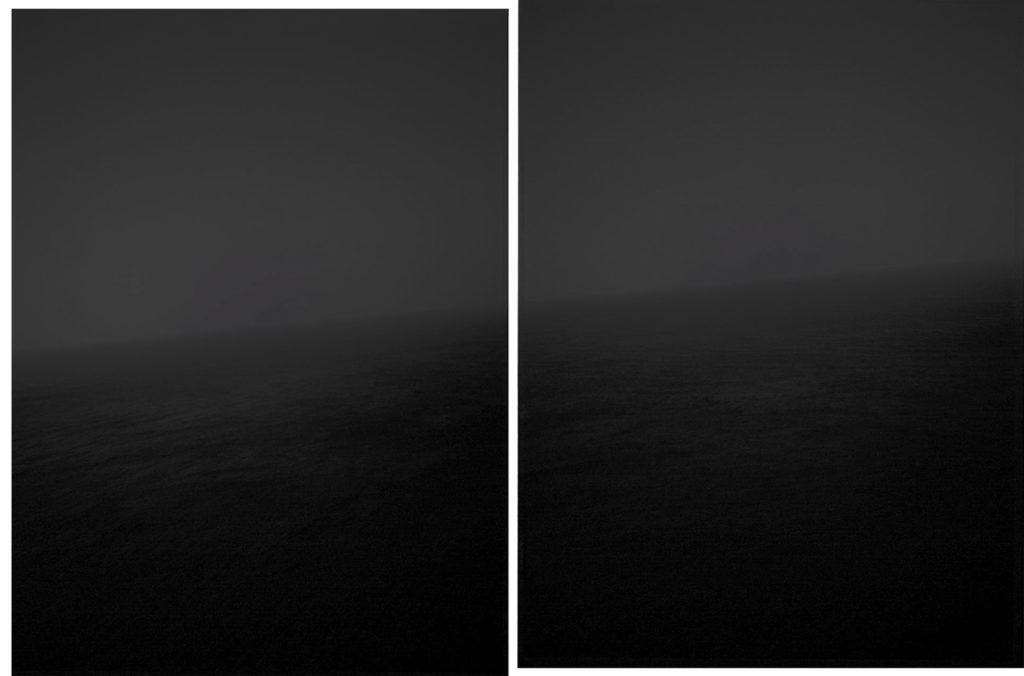
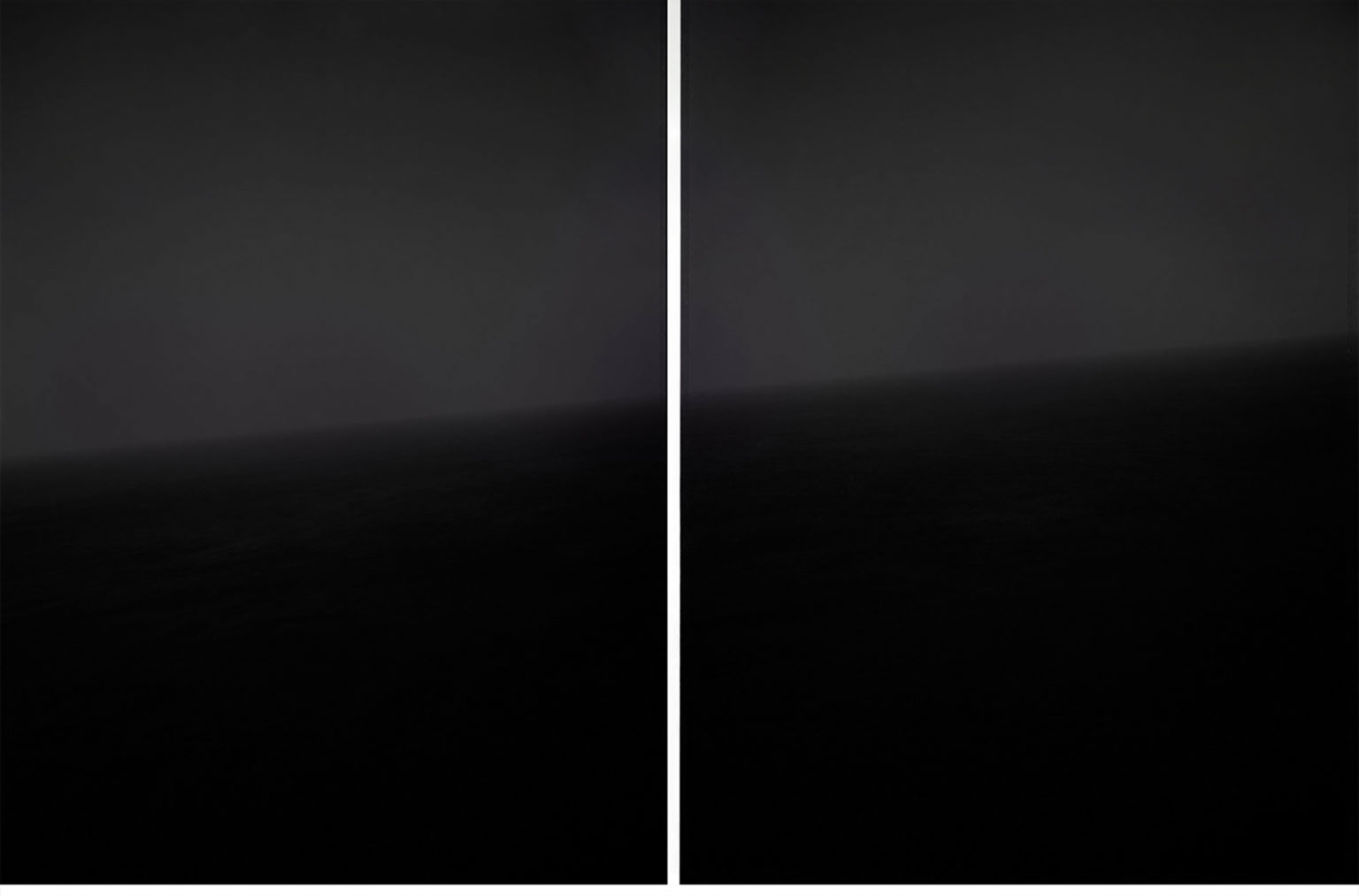
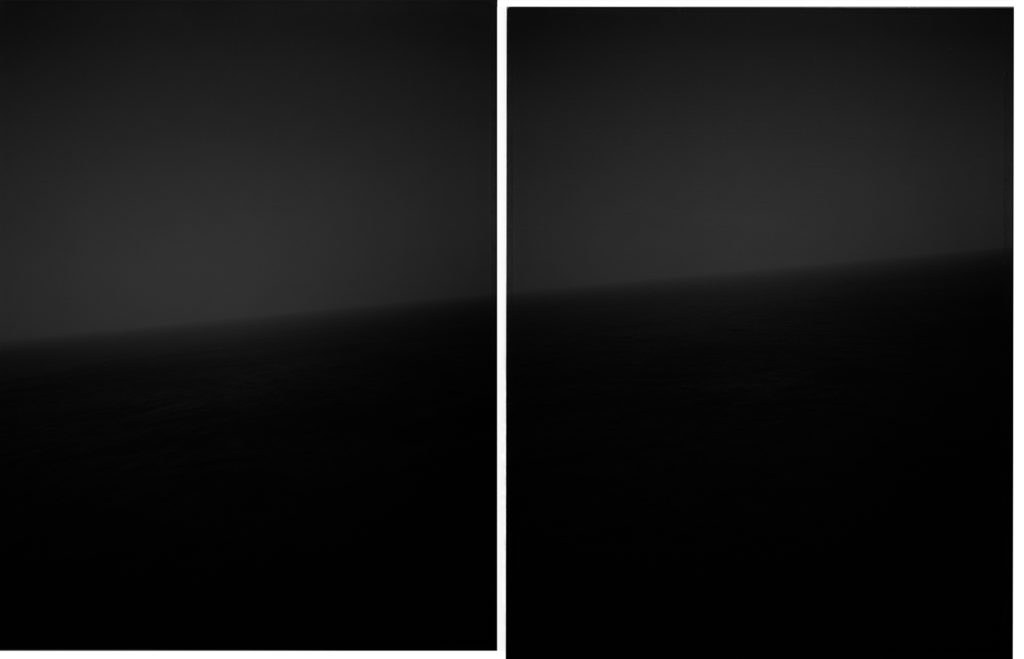
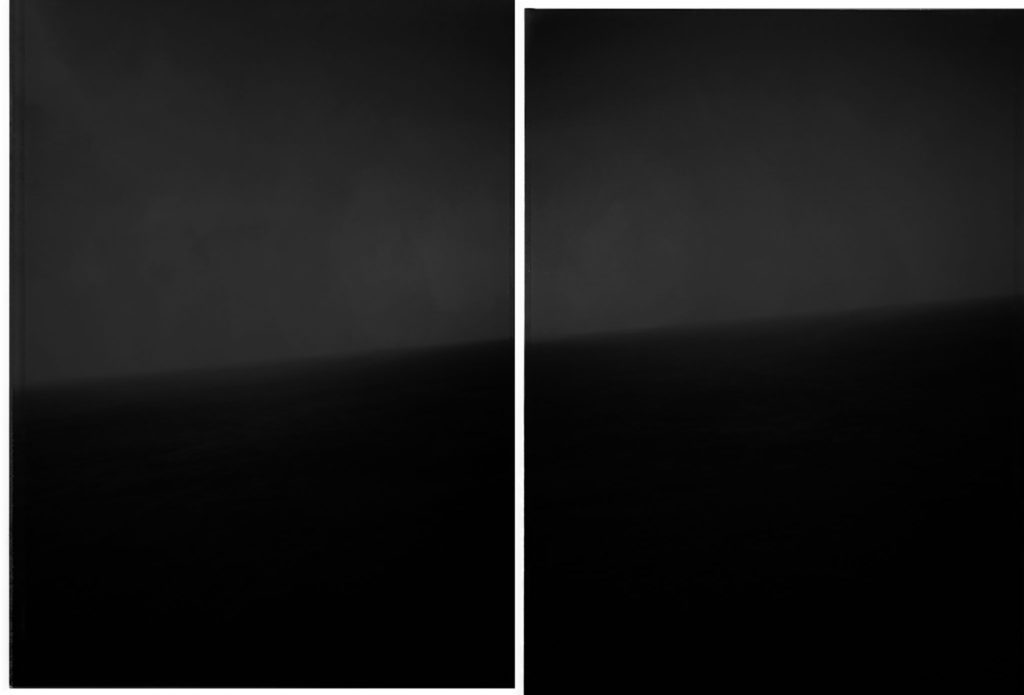
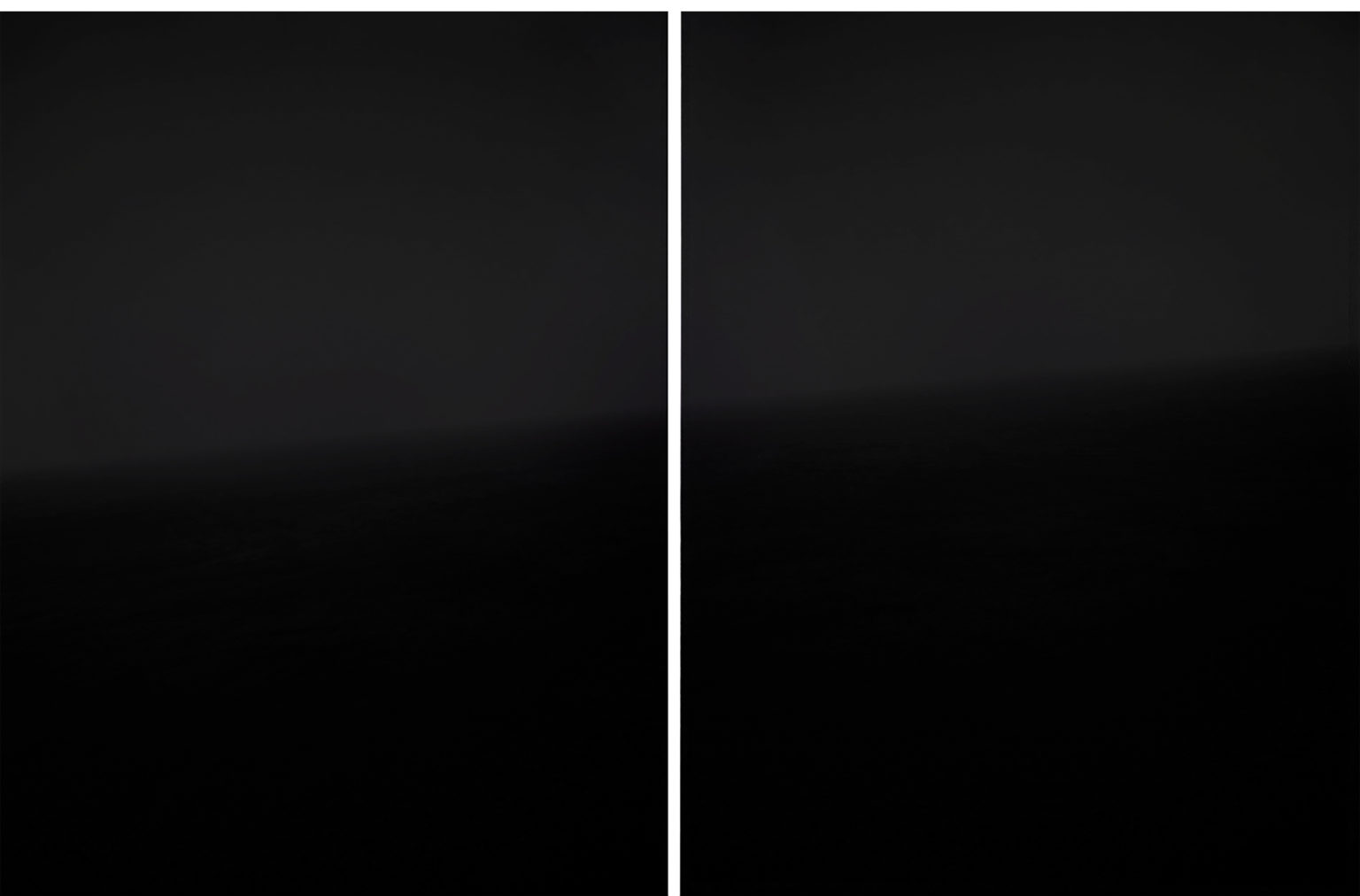
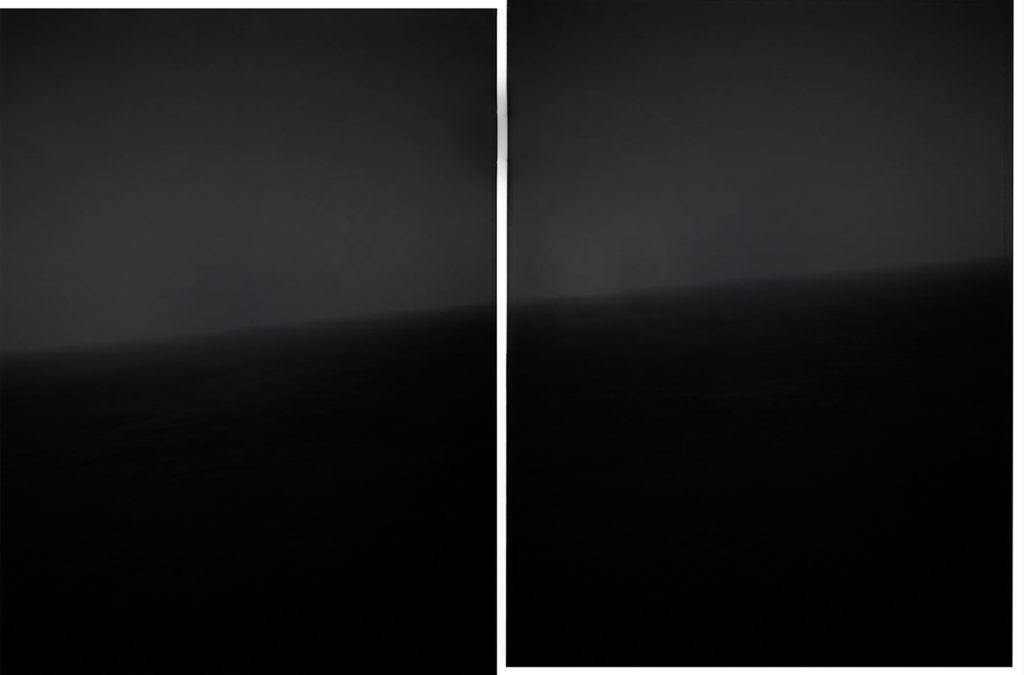
HORIZON -Boundary
1960年代半ばミクロネシのパラオ諸島(当時、国連管理統治アメリカ委任領・現パラオ共和国)に制作現場を選び数度の旅を試みた。北端に位置するカヤンゲル(Kayangel Is)諸島の馬蹄環礁内に浮かぶ珊瑚州に仰向き、あくまでも深い群青の天空と対自していた。旅の結果としては写真・映像表現に生きぬく結論には至らずじまいだったが、朧げながらも抽象(境界)概念の領域を凝視した実感を瞬時であったが其のイメージを感受できた。
削ぎ落とし、更に削ぎ落としシンプルを表現の信条とする。この’構造’を踏まえたうえで、視る(触る)こと叶わぬ対象(無限縁・抽象)の具現化を試みるとき、私はラピスラズリの天空に一条の円を描き円周の内側の’ひとひら’を切りぬき摂(撮る)った。心の内底での密かな実験であった。
「写真(静止画)・映像(動画)はあくまでも二・三次元の表現事物(者・物)の事象像である」を前提として写真・映像表現の展示(写真・映像表現は展示までを含む創作の相対概念)を試みるとき、’枠’(縁・へり)概念の処理から常に逃れることができない。無限縁の枠、切り撮った’ひとひら’(一辺・一隅)の外周つまり作品内に綴じ込められ付随する周縁を’砌’(*みぎり)と想定するならば、切り撮られ残された天空側の縁(円)辺周に境界(けいかい)が付随しなければ無限縁(∞)相対理論は成立しえない。
天空に残された無限縁(絶対)と切り撮った’ひとひら’の無限縁相対の境界(無限縁・抽象)は天空側に付随すると仮定するとき、切り抜いた’ひとひら’の無限縁時空間は完璧な’抽象’として成立するはず、この事象をあえて強辯し、我が写真論に置換するならば、写真・映像表現は抽象構造をもって目的の最終到達点、即ち我が構造の真髄となるはずである。
‘HORIZON-Boundary’を理想的写真・映像表現の構造と想定(デジタル三次元空間における表現)してこの小文を進める。
写真家の私事としたうえで、縁(額)概念を破棄する事としたい。シンプルな無限縁(抽象概念)のみでの’写真・映像表現’でありたい。ウェブサイトに提示した’HORIZON-Boundary’に無限縁なる抽象の’砌’を表現の相対・絶対を試作してホームサイトに提示をした。
もう1点、何故 Boundary(水平線)を右肩上りにしたのか、さらに複数枚での表現(構造)に挑戦したのか。生理学的(生物学)に、ひとつの事例を提示する。黒板などに右利きの人がチョークで一本の線を右方へ水平に一筆描くとする。何故かその線は版面に対しやや右肩上がりになってしまうことがおゝいはずだ、試してみて頂きたい。つぎに複数枚での表現の事由は’HORIZON-Boundary’の水平イメージの認知がよりレンズ工学的に増幅され強調できると考えた。Boxカメラを段違いに水平移動させ、より長いスパンで右肩上がりのHORIZON-Boundary(水平認知)をつなぎ撮る技術は写真表現者にとっての冒険心を煽り誘うことにも繋がった。
一辺を開放させ、囲みきらぬ無彩色辺、三辺の見切り’砌’、理解を戴けるだろうか。digitalでの三次元空間、理想的には<螺旋キューブ状(管径10m程)>の屋内空間的イメージを仮に想定する。明るく半透明な昼光色、発光角度無特定の光源を創造したい。宇宙空間へ飛翔するイメージ、そこへ無限縁なる’HORIZON-Boundary’を特定のリズムで配置レイアウトする。影を持たぬ創作物体として幽玄に浮遊させたい。
視る・触ること叶わぬ無限縁’HORIZON-Boundary’境界構造概念を写真・映像表現においてシンプルに表象する。表現者終末の使命をこゝにメモした。表現者として是非にもこのインスタレーション’HORIZON-Boundary’を試みたい。
(1984年9月30日、筑摩書房より 森 敦 著〈意味の変容〉初版と遭遇。私の創作座標の原点にあったであろう境界 <けいかい>無限縁(抽象)論が一夜にして明快に晴れ渡った。まさに座右の書との素晴らしい出会いであった。 「死者の眼」23頁、抜粋 ►任意の一点を中心とし、任意の半径を以て円周を描く。円周を境界として、全体概念は二つの領域に分たれる。境界はこの二つの領域のいずれかに属さねばならぬ。このとき、境界がそれに属せざるところの領域を内部といい、境界がそれに属するところの領域を外部という。内部+境界+外部=全体概念・内部=全体概念)
*出典「砌」(みぎり)・水限(みぎり)水際 ・性霊集、九「——の中の円月(えんがつ)を見て」・所、場所際(きわ・ぎわ) ・新村出編・広辞苑・1993年度版
写真家・新正 卓 (ARAMASA Taku) 2022/06/13 12:00
